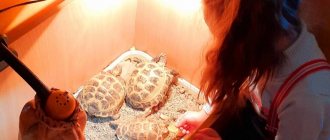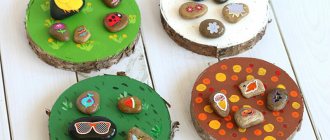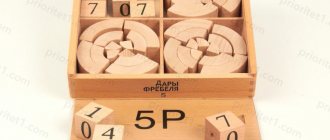Natural corner in kindergarten: DIY decoration
When decorating a corner of nature in a preschool educational institution with your own hands, remember that it should contain a lot of visual material. The most significant of them is the nature calendar.
In a group for kids, it will be enough to place a picture depicting the current season. And also a doll dressed for the season.
For older children, there is a manual on the wall with pictures of the seasons and weather conditions with a moving arrow in the center. After the walk, you can discuss the weather with the children and move the arrow to the desired image. Also, in a corner of nature, it is necessary to set aside a place for children’s drawings on the topic of the observations made.
In older groups, children are introduced to symbols for indicating the weather. Every day, preschoolers mark weather fluctuations with conventional signs and at the end of the month they sum up the results: how many days were cloudy, how many sunny, windy, rainy. By the end of the year, the children will have an idea of the climate in their region.
A beautiful corner of nature in kindergarten
Often, a natural and ecological corner in a kindergarten is combined into one and, in addition to the above, the following is placed in it:
- a set of pictures with birds, insects, domestic and wild animals, plants;
- dummies of vegetables and fruits;
- children's crafts made from natural materials;
- equipment for conducting experiments - molds, containers of different volumes, spatulas, measuring spoons. You can conduct didactic games and experiments with water, sand, stones, shells, and clay to study their properties.
Activities in a corner of nature contribute to the development of work skills in preschool children. Already in the younger group, the teacher involves children in carrying out feasible work assignments. In the older group, corner duty is introduced.
Working in a corner of nature gives children a lot of pleasant experiences. Preschoolers learn to understand the world around them, to notice both general and individual signs of natural objects, which leads them to an understanding of the uniqueness and diversity of living organisms. Communication with nature stimulates children's thirst for creativity. A properly organized living corner is a powerful educational tool in the aesthetic, psychological and moral development of children.
What is important to consider when creating a natural corner in a kindergarten?
A living corner in a kindergarten is designed for each age group, taking into account sanitary standards, the age of the pupils and their capabilities.
SANPIN rules for preschool educational institutions 2.4.1.3049-13 clause 6.11. It has been established that placing animals, aquariums and birds in group rooms (dressing room, group room, bedroom, buffet, toilet) is not allowed.
Therefore, the main inhabitants of the corner will be plants: indoor flowers and a mini garden on the windowsill. The mini garden is made up of garlic, onions, oats and other crops grown in boxes in autumn and winter.
Requirements for the selection of plants
- Work in a corner of nature should be accessible to children in terms of time and strength, so plants are selected that are unpretentious in food and care.
- Plants should not be harmful to the health of children.
- Flowers for a corner of nature in a preschool educational institution should be selected from different types for comparison.
- When placing plants, you need to take into account their biological needs.
- The design of a corner of nature in a preschool educational institution must be done in such a way that preschool children can come up, observe, and do some work.
- Plants should have an attractive appearance that can attract and retain the unsteady attention of children.
The best corner of nature
Features of choosing indoor flowers for different groups
A corner of nature in the younger group should contain no more than 4-5 types of unpretentious indoor flowers. These are plants with distinct flowers, leaves and stems that bloom long and beautifully. Primrose, balsam, ficus, and geranium are perfect.
A corner of nature in the middle group should contain 5-6 species of plants. These are flowers with different sizes and shapes of leaves. In particular, agave, asparagus, chlorophytum.
In the corner of nature in the older group, 6 to 7 types of flowers are placed, 2 or 3 copies each. Plants must have different stems (creeping, climbing) and have bulbs or corms. These include ivy, tradescantia, amaryllis.
For the preparatory group, the number of plants is 6-7 species, which differ in the method of reproduction (bulbs, viviparous). For example, saxifrage, bryophyllum, cyperus.
When planning the design of a nature corner in a kindergarten, do not forget to provide a place to store work equipment, these could be:
- spray,
- watering can,
- cloths for wiping leaves,
- stick for loosening the soil,
- cups for seedlings.
In younger groups, the teacher monitors the cleanliness of the corner and instruments. In the senior and preparatory groups, this can be done with children (appoint a person on duty). The work of preschool children in a corner of nature is carried out in accordance with the curriculum.



